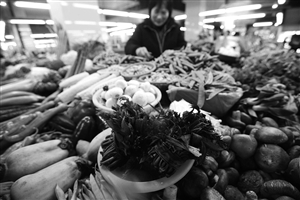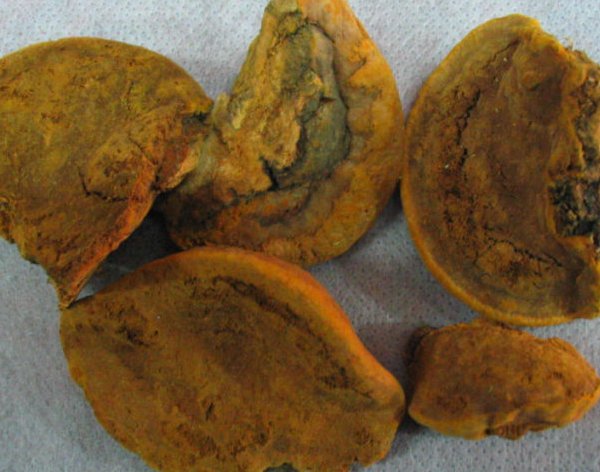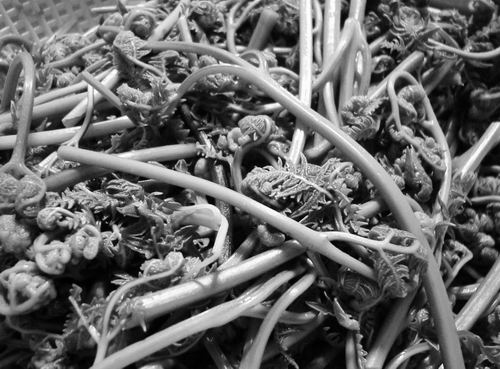Yongcheng market wild vegetables are very popular varieties are not many, mainly "planting vegetables"

Local Toona sinensis sprouts sold at a stall in a vegetable market in Jiangdong
Zhejiang online, April 04-Malan, Toona sinensis, wild onion, wild leek, bracken …... Recently, all kinds of wild vegetables are very popular in Yongcheng market. However, it is not easy to eat delicious authentic wild vegetables. There are not many varieties of wild vegetables in the Yongcheng vegetable market, and most of the wild vegetables supplied by the market are "planted vegetables".
"parents in the city might as well take advantage of the holidays to take their children to the mountains, pick wild vegetables while hiking, learn about farming, and gain some knowledge, which is very meaningful." Ma Minxia, who has more than 20 years of experience in gardening, says that it is the right time to enjoy spring scenery and pick wild vegetables, but there is a lot of knowledge inside.
Wild vegetables are sold in the vegetable market, and not many varieties are planted.
The reporter visited the Yongcheng vegetable market and found that wild vegetables such as Malan head, Toona sinensis, wild water celery, wild onion, wild leek, bracken and so on were very popular. "Malan 8 yuan / jin, shepherd's purse 8 yuan / jin, Malan 8 yuan / jin, dog head scallions 8 yuan / jin, Toon 25 yuan / jin …..." The reporter visited the Huayan, Yuehu and Zhangbinqiao vegetable markets and found that all kinds of wild vegetables were very popular. In the Zhangbinqiao vegetable market, some citizens were carrying baskets to explore water celery and wild onions.
"in the old days, the grass became an upstart at the table, with one jin of Toon worth six or seven kilos of eggs. When it was most expensive, it was sold at 60 yuan / jin. Now the price of Toona sinensis in other places has dropped to about 25 yuan / jin, while the price of local Toona sinensis is 35 yuan / jin. There are very few authentic wild vegetables, such as Malan, most of which are grown in greenhouses. " One operator said frankly, "if you really want to eat wild vegetables, you'd better go up to the mountain to dig. There are many kinds of wild vegetables on the mountain."
"compared with other wild vegetables, shepherd's purse appeared on the market early, has now flowered and is about to close the market. And Malan, Toona sinensis is on the market season, the price is cheap, but mostly for planting. " Vegetable market operators say that now a lot of wild vegetables can be eaten all the year round because they are grown in the greenhouse.
The reporter found that eating wild vegetables has become a fashion for the citizens of Yongcheng, and some restaurants attract customers with wild vegetables. "there are wild vegetables all the year round, there are professional purchase channels, there are local wild vegetables, there are even wild vegetables from other places, and most of them come from other places by express." On the east side of the Yongjiang Bridge in Jiangdong, there is a restaurant called "Wild vegetable fishing", which specializes in wild vegetables all the year round. The restaurant owner told the reporter, "We have never advertised this wild vegetable restaurant for many years, but business has been very good." Said the landlady of the restaurant.
There are nearly 50 kinds of edible wild vegetables in Ningbo, which is very difficult to identify.
"in this season, whenever you walk into any mountain, fresh and tender wild vegetables can be picked at any time, in the mountains, by the mountain stream or by the river." Wechat netizen "Sunshine 40" suggested that when picking fragrant and tender wild vegetables, only by "chewing" in the mountains, "can you know the true face of wild vegetables." But the reporter's experience found that it is not easy to identify and pick wild vegetables in nature.
"there are a lot of shepherd's purse here." In the mountains of Tiantong Temple, the reporter thought he had found a lot of shepherd's purse. "not at all." After seeing the so-called shepherd's purse found by the reporter, Sister Ma Minxia laughed with her friends. "for a novice, the mountains are all treasures, but if you want to pick delicious and safe wild vegetables, you have to study hard." Sister Ma said that many citizens who came for an outing were at a loss as to what to do about the wild vegetables on the mountain.
"when the children were very young, the first lesson I taught them was to get to know all kinds of wild vegetables and Chinese herbs in the mountains." Sister Ma said that there are nearly 50 common varieties of wild vegetables in Ningbo, including shepherd's purse, Malan, Toona sinensis, water celery, plantain, houttuynia, mulberry leaves and so on. Pointing to a clump of wild vegetables with small flowers, she said, this is "white-haired summer bitter grass". "this grass often grows on the moist, fat soil near the roadside, the forest, the grass, the village and the ditch, and can treat gum inflammation and oral inflammation."
In more than half a day, Sister Ma introduced to the reporter more than 20 kinds of wild vegetables she ate, such as when the fairy crane grass had diarrhea, the birds were thorns all over the body, and the birds could not settle down, but they were delicious when they were fried with tender tips. But unfortunately, the reporter simply "digested" so much, can confirm only wild magnolia, wild onions, bracken.
What should we pay attention to when picking and eating wild vegetables?
Sister Ma also told reporters that the edible parts of different wild vegetables are also different, and most wild vegetables eat tender leaves and whole herbs, such as shepherd's purse, Toon, Malan, celery, dandelion, etc.; wild vegetables are Yingshanhong, wisteria, Sophora flower and so on; root-eating herbs include Houttuynia cordata, Polygonum multiflorum, sand ginseng, buckwheat head, and so on.
Wild vegetables not only taste delicious, but also have certain medicinal effects. Many wild vegetables are still important Chinese herbal medicine, which can play a role in health care and treatment of diseases. For example, traditional Chinese medicine believes that Malan has a cool, slightly cold taste, which has the effects of heat-clearing and detoxification, cooling blood and stopping bleeding, promoting dampness and detumescence, antibacterial and anti-inflammatory. However, experts suggest that although wild vegetables are delicious and nutritious, they must pay attention to safety. Wild vegetables that are not familiar with or do not know must not be picked at random, and citizens who do not understand agriculture had better be picked under the guidance of others.
"it is best not to collect wild vegetables from places such as roadsides sprayed with herbicides, places polluted by car exhaust, and garbage dumps in mountainous areas or open fields far away from pollution sources." Sister Ma said that in spring, farmland, flower nurseries or fruit trees are often sprayed with pesticides and do not pick them. Before cooking, it is best to blanch wild vegetables with hot water and soak them in clean water, which is helpful to remove toxins from wild vegetables. Once you feel uncomfortable after eating, you should see a doctor immediately, and remember to bring wild vegetable samples to facilitate the doctor's symptomatic treatment.
- Prev

The anti-tumor effect of mulberry yellow may be stronger than that of Ganoderma lucidum.
The anti-tumor effect of mulberry yellow may be stronger than that of Ganoderma lucidum.
- Next

The emergence of wild vegetable planting industry, the present situation and prospect of wild vegetable planting
The emergence of wild vegetable planting industry, the present situation and prospect of wild vegetable planting
Related
- A course of planting techniques and methods on how to grow carrots
- How to plant the latest tulips?
- Is it better to pick tea in the morning or in the afternoon? When is the best time for tea to be picked? what is the third or fifth tea?
- Launch Yuanxiao Happy combination Haocha + Tea Yuan healthy Taste
- Penghu Tourism "Fireworks 20 Parade with You"
- 2022 West Lake Happiness holds "Digital Revitalization Voucher" and draws iphone13 and laptop.
- Banqiao Fuzhou social houses are designed to change start-up combined with police elimination to create a safe and livable environment
- The convenient measure of "mechanical weeding" in Xinbei has been abused and the Agriculture Bureau has imposed heavy penalties on the illegal land consolidation.
- Changgeng University Joins Hands with Four Memory Factories to Rescue Memory Talent Shortage
- The list of Taiwan's top 100 MVP managers is listed by the Director-General of the Farmers' Association of Sanxia District.

